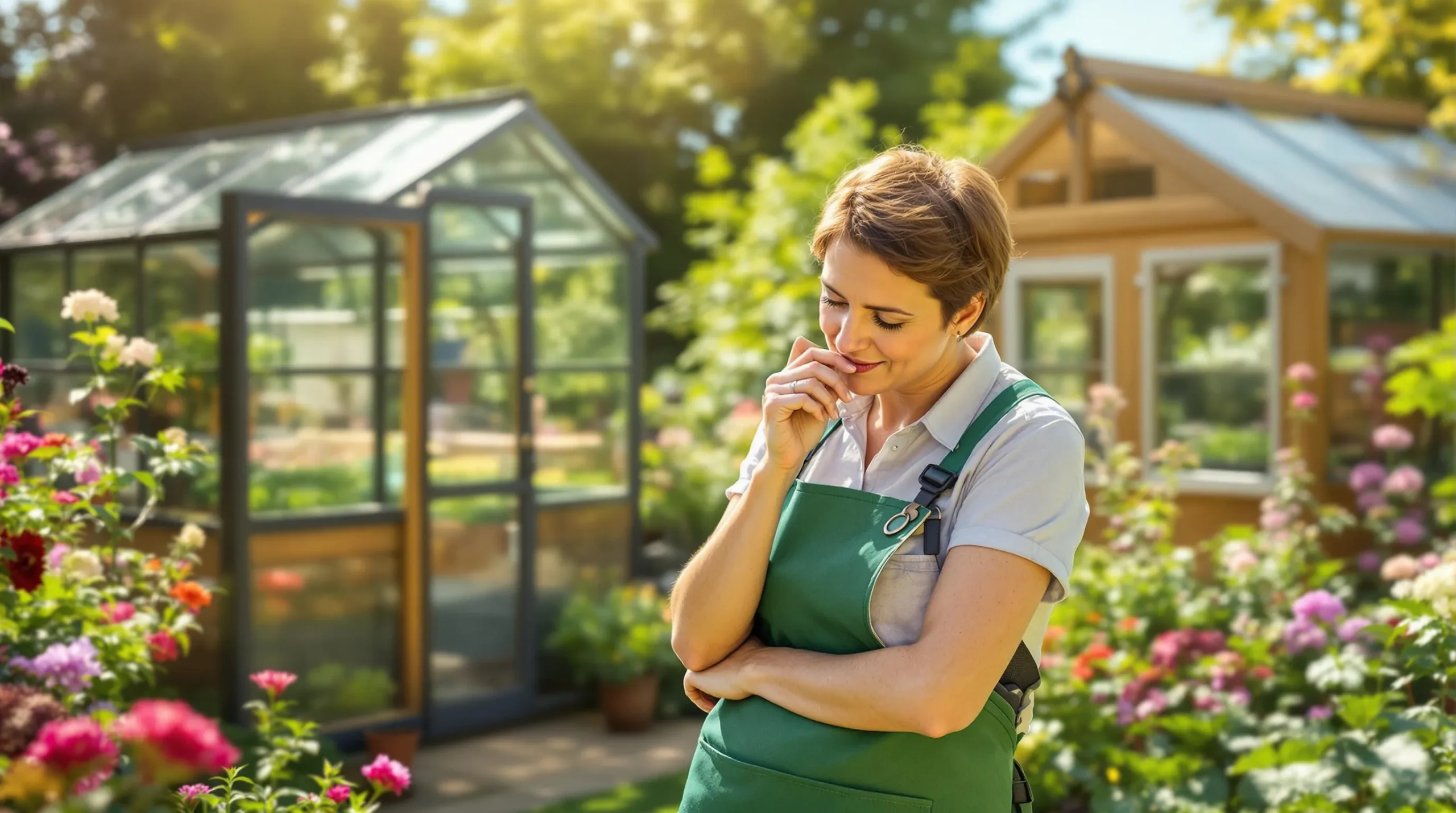
How to Choose Your First Greenhouse: A Complete Beginner’s Guide for 2025
Learn how to choose your perfect first greenhouse with our expert guide. Discover size, materials, and features to extend your growing season by 2-3 months.
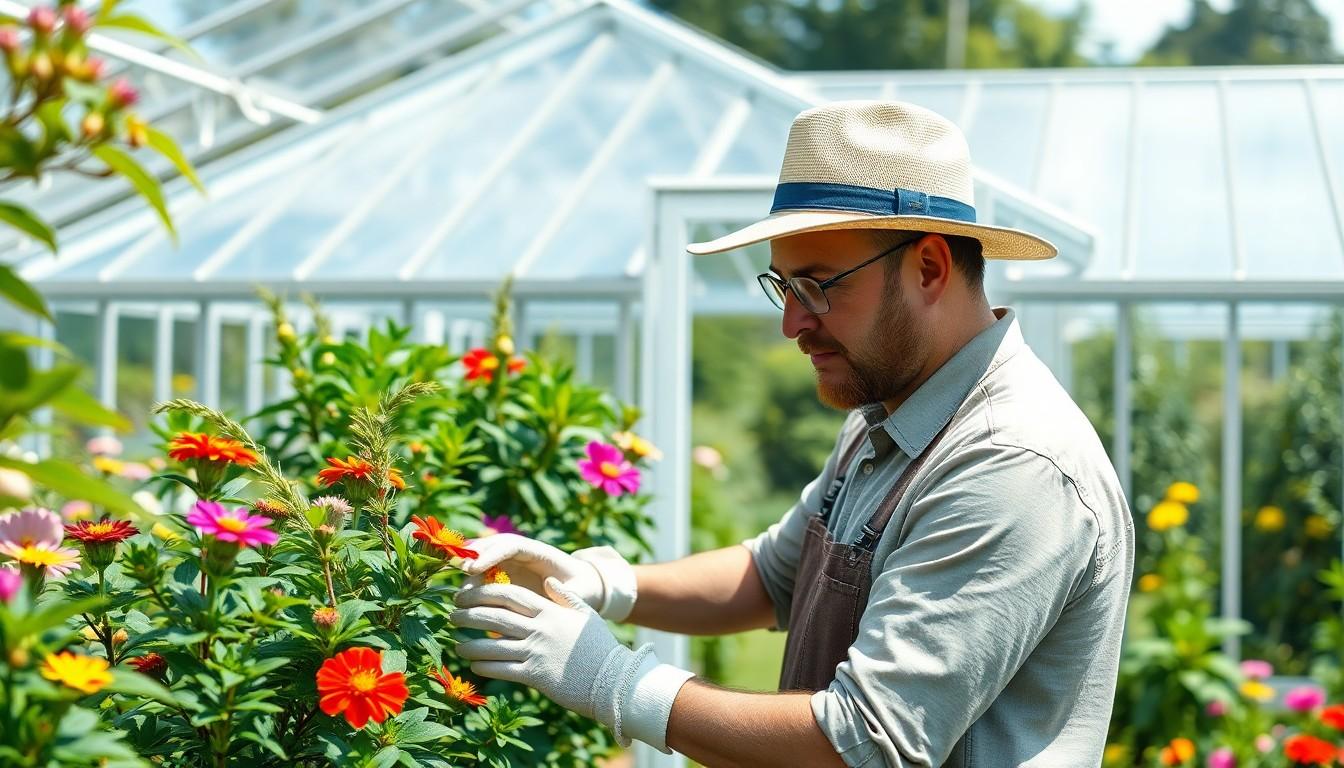
Want to build your dream greenhouse without breaking the bank? Polycarbonate greenhouses are a smart, budget-friendly alternative to traditional glass, loved by both hobby gardeners and professionals. Not only are they affordable to set up, but they’re also cost-effective to maintain. Their excellent heat retention helps cut down on heating costs, while the shatter-resistant panels mean fewer worries about replacements. In addition, their lightweight yet durable design eliminates the need for an expensive heavy-duty frame—keeping costs low without compromising on strength and reliability.
Polycarbonate greenhouses use strong, lightweight plastic panels that offer excellent insulation and durability. They retain heat efficiently while allowing plenty of light in, creating the perfect environment for plants to thrive.
Polycarbonate glazing features clear, impact-resistant plastic panels that let in 80-90% of available light while providing better insulation than traditional glass. Their multi-wall design traps air, creating a natural barrier against temperature changes to keep your greenhouse warm and stable.
Two primary polycarbonate panel options exist for greenhouse construction:
Both panel types serve different needs. Twin-wall panels are ideal for retaining heat in colder months, while single-layer panels maximise light penetration for strong plant growth. Choosing the right one depends on your climate and growing goals.
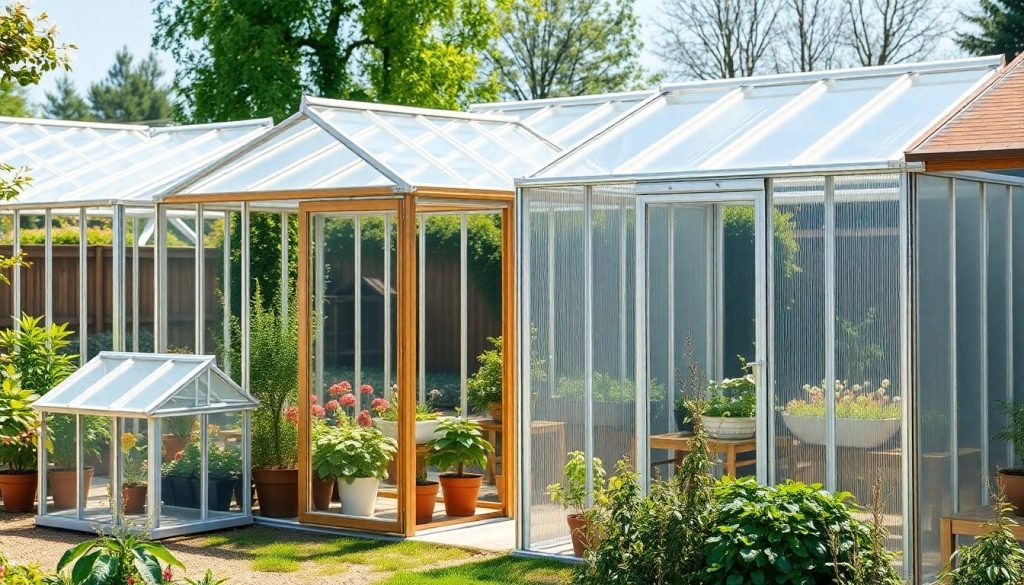
Polycarbonate greenhouses offer a cost-effective alternative to glass structures, with significant savings in both materials and installation. Here’s a detailed breakdown of the expenses involved:
The price structure for polycarbonate greenhouse components includes these key elements:
Installing a polycarbonate greenhouse involves these essential components:
The installation costs vary based on:
Note: Currency conversions are approximate and subject to market fluctuations.
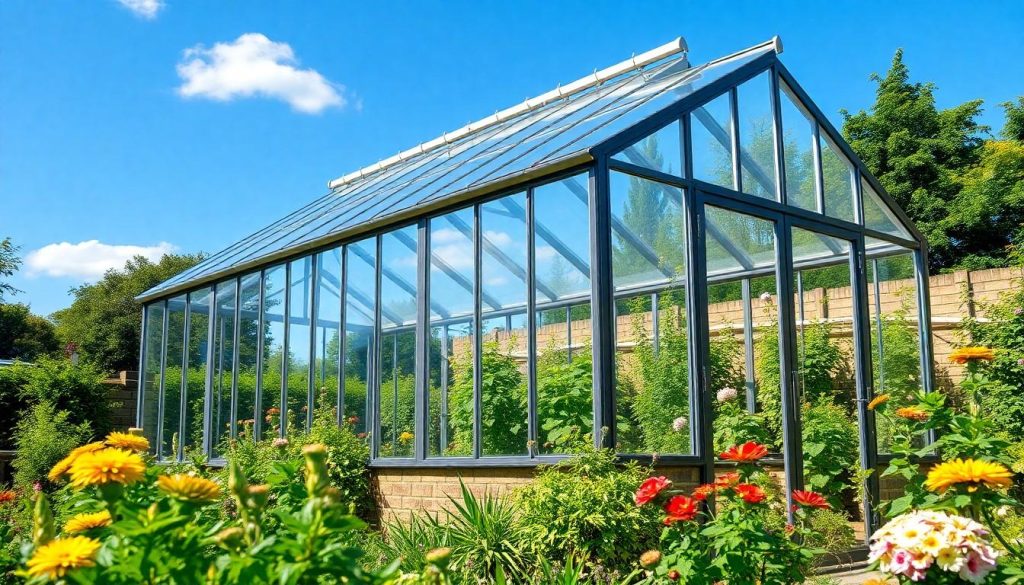
Polycarbonate greenhouses deliver substantial cost savings through reduced energy consumption, minimal maintenance, and extended lifespan. These economic advantages make them a practical investment for both hobby gardeners and commercial growers.
Polycarbonate panels maintain their structural integrity for 10-15 years in typical weather conditions. The panels resist:
| Cost Comparison | Polycarbonate | Glass |
| Annual Heating Cost | £3.20/sq ft | £5.30/sq ft |
| Cleaning Cost/Year | £0.50/sq ft | £1.20/sq ft |
| Panel Lifespan | 10-15 years | 25+ years |
| Replacement Rate | 2-3% annually | 8-12% annually |
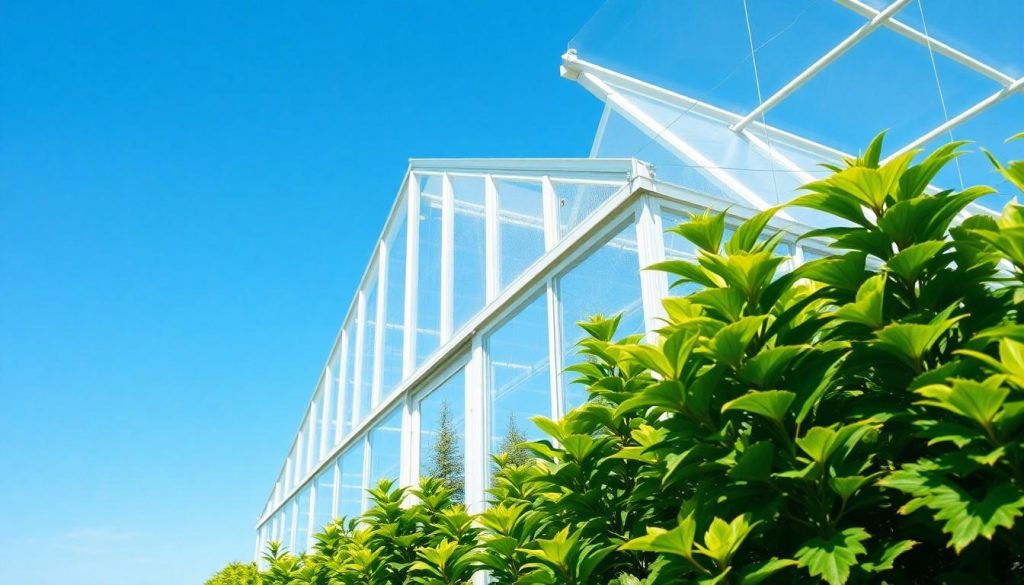
Polycarbonate greenhouses deliver superior energy efficiency through advanced thermal insulation properties. The material’s unique structure creates multiple air chambers that trap heat effectively while maintaining optimal light transmission.
Polycarbonate panels feature superior R-values compared to traditional glass:
These insulation characteristics translate to:
| Energy Metric | Polycarbonate | Glass |
| Heat Retention | 40% better | Baseline |
| R-Value/inch | 1.54 | 0.95 |
| Light Transmission | 80-90% | 90% |
Polycarbonate greenhouse panels regulate internal temperatures through:
Temperature control features include:
| Feature | Benefit |
| Air Chamber Design | Reduces heat loss by 40% |
| Thermal Break | Prevents condensation formation |
| Solar Heat Gain | Maintains consistent temperatures |
| Diffused Light | Prevents hot spots |
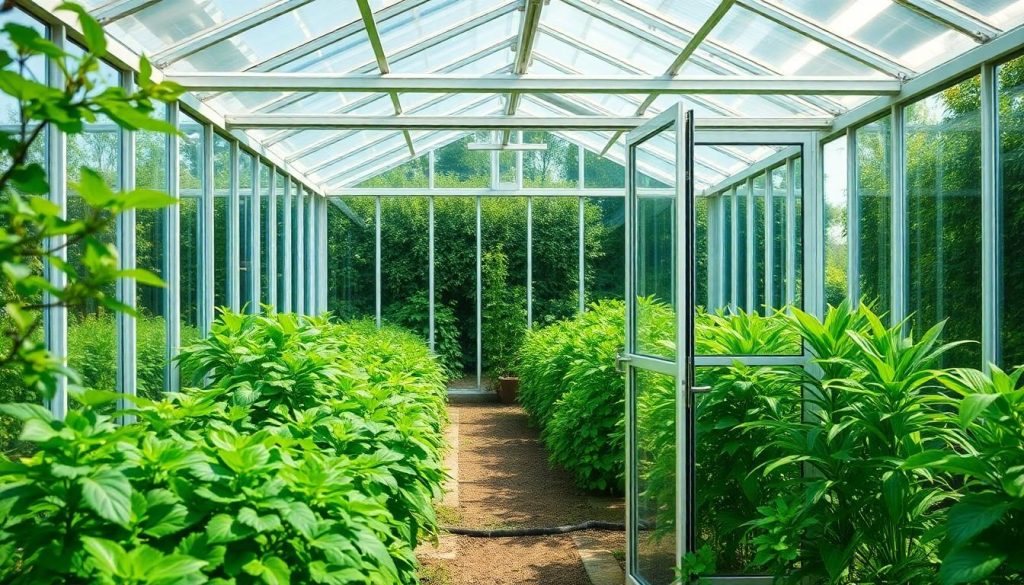
Polycarbonate greenhouses are designed to improve growing conditions while keeping costs low. Here’s a closer look at the key features that make them so effective:
Polycarbonate panels transmit 81% of available light, creating bright growing environments for plants requiring 6+ hours of direct sunlight daily. The twin-wall design blocks harmful UV rays while letting in just the right amount of light for healthy plant growth. This balanced light transmission protects both plants and greenhouse workers from UV damage.
| Light Performance Metrics | Value |
| Light Transmission Rate | 81% |
| Daily Sunlight Requirement | 6+ hours |
| UV Protection | 100% |
Polycarbonate panels demonstrate 200 times more strength than standard glass, protecting against:
The material’s durability eliminates frequent panel replacements caused by weather damage. Its resilient structure maintains integrity in extreme temperatures ensuring consistent growing conditions year-round.
| Durability Comparison | Polycarbonate vs Glass |
| Impact Resistance | 200x stronger |
| Lifespan | 10-15 years |
| Heat Retention | 40% more efficient |
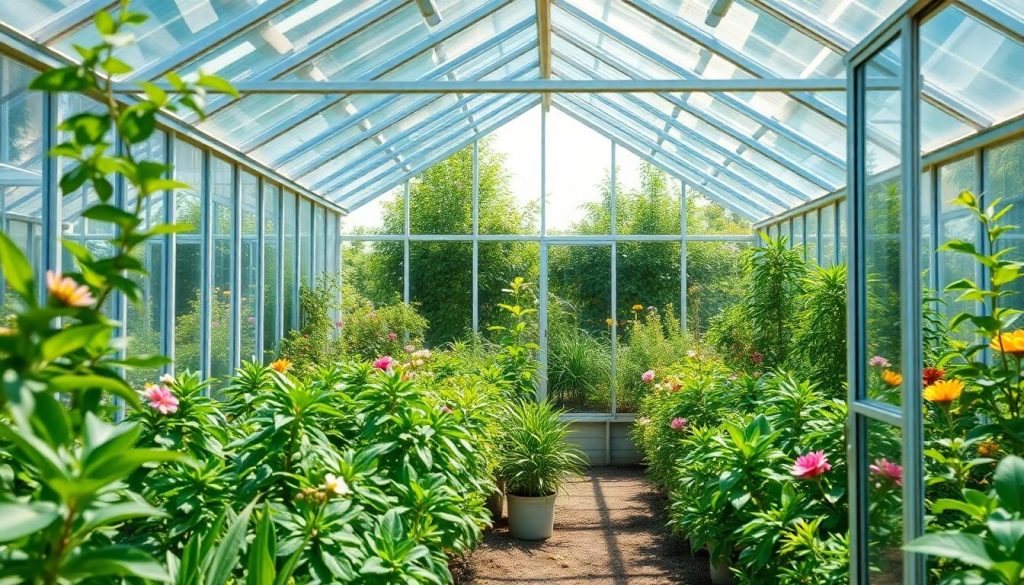
Polycarbonate greenhouses offer significant cost advantages over traditional glass structures across multiple factors. The total cost difference spans initial investment, installation expenses, maintenance requirements, and long-term operating costs.
Polycarbonate greenhouses provide substantial savings compared to glass alternatives in both materials and labour:
The financial benefits of polycarbonate greenhouses become evident through quantifiable savings:
| Cost Factor | Polycarbonate | Glass |
| Annual Heating Costs | 40% lower | Baseline |
| Maintenance Costs/Year | £25-£50 | £100-£200 |
| Panel Replacement Rate | 6.7% | 14.3% |
| Energy Efficiency (R-value) | 1.54 | 0.95 |
Polycarbonate greenhouses stand out as a smart investment for both hobby gardeners and professionals. Their combination of durability energy efficiency and cost-effectiveness makes them an excellent alternative to traditional glass structures.
You’ll benefit from significant savings through lower initial costs reduced energy consumption and minimal maintenance requirements. The superior insulation properties and impressive light transmission of polycarbonate panels create ideal growing conditions while protecting your plants from harsh weather.
With a potential return on investment within 3-5 years these structures offer outstanding value for money. When you factor in their 10-15 year lifespan and remarkable durability polycarbonate greenhouses prove to be the most cost-effective choice for your gardening needs.
Polycarbonate greenhouses are significantly more cost-effective, with panels costing around £0.09 per square foot compared to glass at £1.54-£1.93. Complete greenhouse kits range from £386-£3,860, offering substantial savings in materials and installation costs. The initial investment can be recovered within 3-5 years through reduced maintenance and energy costs.
Polycarbonate greenhouses typically last 10-15 years under normal weather conditions. They offer excellent durability against impact damage, UV radiation, temperature fluctuations, and heavy snow loads. With proper maintenance, including annual cleaning with mild soap, they can maintain their performance throughout their lifespan.
Twin-wall polycarbonate panels reduce heating costs by 40% compared to glass, with an R-1.54 insulation rating versus glass at R-0.95. The multi-wall construction creates insulating air pockets that maintain consistent internal temperatures and prevent rapid temperature fluctuations.
Two main types are available: single-layer panels and twin-wall panels. Single-layer panels are more cost-effective with basic insulation properties, while twin-wall panels offer enhanced insulation and reduced plant scorching risk. The choice depends on local climate and growing requirements.
Polycarbonate panels transmit 80-90% of available light, making them ideal for plants requiring over six hours of direct sunlight daily. The twin-wall structure effectively filters harmful UV radiation while providing 100% UV protection for plants.
Maintenance is minimal, requiring only annual washing with mild soap and simple cleaning tools. The panels resist impact damage and weathering, eliminating the need for frequent repairs or replacements. Regular cleaning helps maintain optimal light transmission.
Yes, polycarbonate greenhouses are ideal for DIY installation due to their lightweight construction and simple assembly. This can reduce labour costs by up to 40% compared to glass greenhouses. Basic tools and foundation preparation are the main requirements.

Learn how to choose your perfect first greenhouse with our expert guide. Discover size, materials, and features to extend your growing season by 2-3 months.
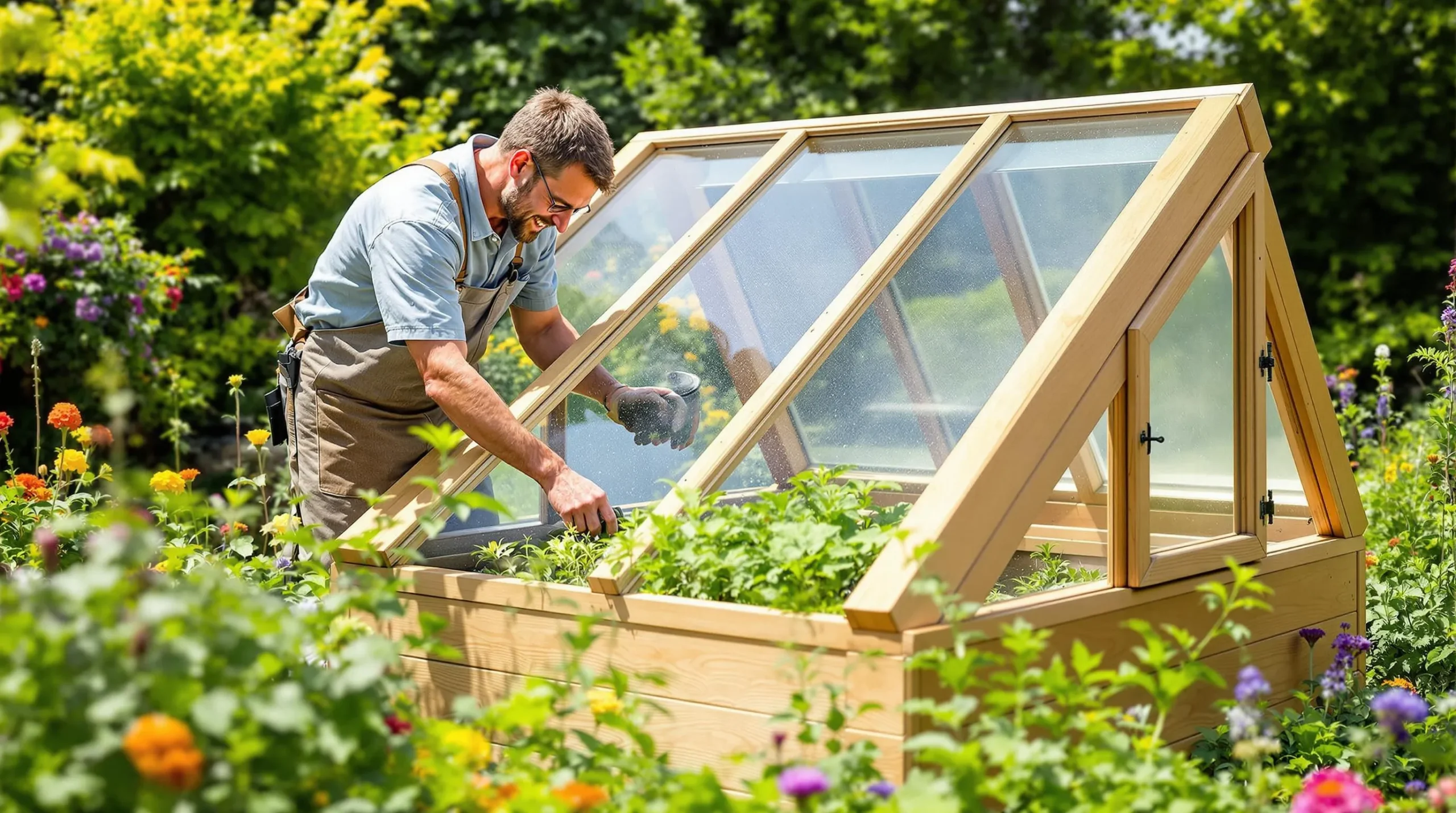
Learn how to make a cold frame to extend your growing season, protect plants in winter, and grow seedlings all year. Simple, cost-effective, and DIY-friendly!